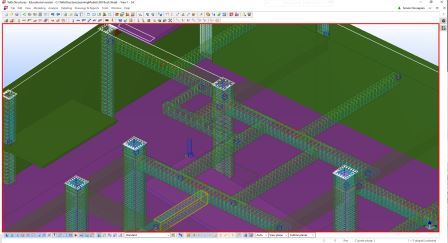

Printable PDF version
Subscribe to our newsletter
LEEDing the Social Conscience
Cost vs. Technology Upgrades
Rollercoaster
Construction
Management Specialists
111 Pine Street, Suite 1315
San Francisco, CA 94111
(415) 981-9430 (San Francisco office)
1663 Eureka Road
Roseville, CA 95661
(916) 742-1770 (Sacramento office)
9449 Balboa Avenue, Suite 270
San Diego, CA 92123
(619) 518-5648 (San Diego office)
8538 173rd Avenue NE
Redmond, WA 98052
(206) 571-0128 (Seattle office)
2063 Grant Road
Los Altos, CA 94024
(650) 386-1728 (South Bay office)
P.O. Box 492115
Los Angeles, CA 90049
(424) 343-2652 (Los Angeles, CA office)
www.TBDconsultants.com
LEED has led the way in making the construction industry conscious of environmental issues, and in this article we look at it's moves to tackle social issues.
Cost estimating has come a long way since the paper and pencil days, but even with the new selection of software that is available today, modern takeoff software adoption has been slow. The argument that is often given is that it is just as easy to do the takeoff on an old software platform, digitizer or even by hand. While using old methods may save the time of learning new ones, it can be a shortsighted solution for projects that have a long-term timeline.
The construction industry has changed immensely in the past 10 years. With the advent of cloud computing, mobile computing, and overall advancements in the IT sector, we have seen big strides in how construction estimates are prepared. And yet, many companies, even Fortune 500 ones, often still use old methods.

One of the reasons for the slow software adoption rates could be summed up by the old saying "if it ain't broke, don't fix it" and therefore any idea of continuous improvement gets neglected. When a company remains fixed and does not strive for continuous improvement, slowly but surely it will lose its competitive edge. Therefore, while it may be easier to do something quickly on outdated software, it will cost you in the future in lost time.
Time that could have been saved in the future by spending minor additional time in the present is time that is wasted. This is seen very often in the construction industry, and it can often be seen in change order reviews. For example, in the rebar industry many contractors will use 2D software to complete a takeoff and then transfer it to rebar estimating software. While this may be fine for rebar contractors, it will probably not give much useful information for a cost estimator trying to reconcile quantities and costs.
The cost consultant, most likely using similar 2D software such as On-Screen Takeoff, or Planswift, and exporting to Excel, can end up with an estimate format that is notably different from the contractor. Differing estimating format and takeoff methodology can result in countless hours spent reformatting estimates and takeoffs before the reconciliation process can even begin. This is where modern 3D takeoff software might be of advantage for the cost consultant because it alleviates the problem of takeoff and estimate formats in one go.
One example of 3D BIM software for rebar is Tekla Structures where an existing BIM model can be imported, and all rebar is detailed as specified in the drawings sets. The beauty of this software is not the detailing however, but the ability to dynamically change the takeoff and have the estimate updated in any format that is desired. In the 2D approach, every change that is made through the takeoff software has to be manually updated, extending the reconciliation time. Not only that, but with Tekla, the changes can be made on the fly during the reconciliation process, and updated numbers can be immediately available, thus saving perhaps days of back-and-forth email exchanges.
The biggest advantage however, is the fact that everything can be "seen", and by that I mean the building and all its components are visible in three dimensions, and you can zoom in, hide/show rebar components, and isolate parts in many combinations. This is a big advantage during the reconciliation process, because now everyone can see what is being included.
Although software like Tekla is powerful, there is a learning curve and the software pricing can be steep. A company will have to evaluate whether the lost time justifies the cost of purchasing and training. Perhaps for smaller projects the lost time will not warrant such a purchase, but for larger, multi-million, or even billion dollar projects, such an investment can pay for itself many times over.

In regards to software, the tendency is to keep using the same programs year after year with no real plan to upgrade for the future, but short term gains can add up to long term losses. This way of operating a business can be dangerous because, not only can you eventually lose your competitive edge, but when it comes to finally upgrading, the capital cost and learning curve will be even steeper. Therefore the saying "If it ain't broke, don't fix it" should perhaps change to "If it ain't broke, update it!" Technology advances are continuing in all spheres, and getting left behind can leave you in the same position as the high street bookstore (remember those?)
Simon Hovsepian, TBD Consultants
The year started off with a bumpy ride for the stock market, which resulted in some people talking about a new recession. Here, our editor gives his view of what has been happening and what the economy is really doing.
Design consultant: Katie Levine of Vallance, Inc.